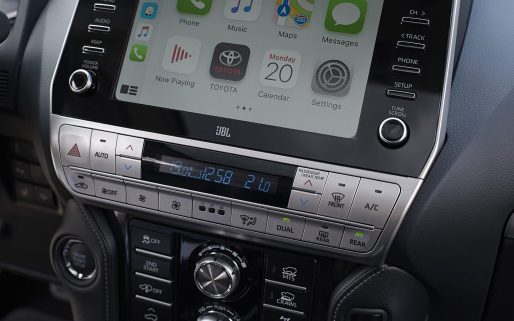What is an exhaust gas recirculation (EGR) valve?
The EGR valve in your Toyota is fitted within the exhaust system and allows some of the gases produced during the combustion process to be re-burnt within the combustion chamber for a second and more effective time. This occurs when the correct engine operating conditions are met and, in turn, serves to reduce harmful emissions.
What does an EGR valve do?
The process of recirculating precise quantities of exhaust gases back into the combustion chamber has a number of advantages. In petrol engines, it helps to lower combustion temperatures and reduces the chance of spontaneous combustion, also known as knock. This allows the engine control unit (ECU) to dilute the air/fuel mixture and reduce petrol consumption.
In diesel engines, the role of the EGR valve is even more important. Routing exhaust gases back into the combustion chamber also lowers combustion temperatures, but the primary benefit is the reduced formation of nitrous oxide (NOx) particulates. In addition, the reappearance of spent exhaust gases within the combustion chamber enables the engine to neutralise these particulates through secondary burning.
Does the work of the EGR valve relate to the function of the particulate filter in diesel engines?
Yes, but indirectly. The neutralising of NOx soot within the combustion chamber reduces the quantity of this material heading into the diesel particulate filter (DPF) installed further down the exhaust system. This increases the time period between regeneration procedures and the service life of the DPF itself.
Why might an EGR valve fail?
Its location within the direct path of flowing exhaust gases means that soot can accumulate around the EGR valve and block its free movement. It is possible to mitigate this by ensuring the vehicle is regularly driven at sustained speeds above 40mph. Constant use of any vehicle in low-speed, urban environments with frequent stops will accelerate the amount of soot collecting around the EGR valve.
How can I tell if the EGR valve in my car is failing?
A failing EGR valve will affect the performance and economy of your engine, though it is likely that the ECU will notice the issue and alert the driver through a dashboard warning light before any physical symptoms are experienced. These symptoms may include rough idling, hesitance in acceleration and a loss in fuel economy.
What do I need to do if I see the engine check light illuminate?
Return the car to your main dealer to be checked. If the fault code displayed by the diagnostic equipment relates to exhaust gas recirculation, the likelihood is that the valve will need to be either cleaned or replaced. Cleaning is much cheaper than replacement, so it is prudent to react immediately to all warning lights.







Hello. They always praise Toyota’s high quality and service, but now my car has a malfunction in the EGR, and the dealer in Liverpool, whose name is Toyota Johnson, tells me that I will not replace it under warranty, and I suggest you think about a new car, now I have to throw my car in the junkyard because they won’t even be able to replace a single part!!
Hi there, thanks for getting in touch.
All warranty claims must be investigated on a case by case basis to establish whether the fault is caused by a manufacturing defect or wear and tear, for which the latter will not be claimable.
Thanks,
Toyota UK